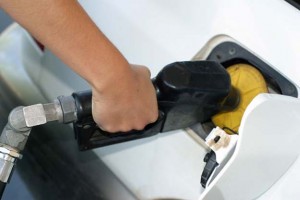Industry observers keep wondering what it would take to produce a wholesale shift in the American automotive marketplace. Despite near-record prices last Spring and the brief push to $4 a gallon several years earlier, U.S. motorists have largely continued buying the products they’ve always bought.
But a new survey suggests the market could hit a “wall” at $4.50 a gallon, nearly nine of every 10 “new-vehicle intenders” telling CNW Marketing they would purchase a more fuel-efficient model “immediately” were prices to reach that level. And the vast majority of those buyers said they would specifically be in the market for a hybrid.
“Toss in the possibility of $5 per gallon gasoline,” said CNW Marketing director Art Spinella, and the study would suggest the hybrid – and presumably electric – vehicle markets should explode.”
Or will they?
In recent years, whenever motorists were asked to speculate about what they’d do following a big fuel price spike they have predicted a sizable shift to more fuel-efficient products, whether switching from big SUVs to compact crossover or from V-8s to hybrids. But, notes Spinella, that paradigm shift has yet to materialize.
Indeed, industry sales data reveals that hybrid sales actually slumped in 2011, despite the spring price hikes. For the year as a whole, all forms of battery-based products – from mild hybrids like the Honda Insight – to full battery-electric vehicles such as the Nissan Leaf – totaled less than 3% of the overall market. And fully half of those sales were made up by just one model, the Toyota Prius, which has become the poster child of the green scene.
There have been some shifts: the full-size pickup segment has lost several points of market share, for example, so-called personal use buyers largely migrating to other segments. But there’s been none of the wholesale shifting to compact and smaller products that some analysts had predicted.
And that should be no surprise. Earlier surveys routinely predicted dire results when motorists were asked gas price hikes of as little as 50 cents to a dollar a gallon, results that failed to materialize when prices did, in fact, go from $2.00 to $2.50 to $3.00 and higher.
In April 2006, when gas averaged $2.75 in the U.S., noted Spinella, 45% of new car intenders said they’d consider a hybrid when the pump price reached $3.75. A year ago, 93% of buyers said they’d be hunting for a new, fuel-efficient model if prices stayed around $4.
With prices now nudging $4, the latest CNW survey probed the impact of $4.50 gas. It found 87% of buyers saying that’d be the trigger for a switch, fully 93% of those intenders saying they’d take a serious look at a hybrid.
If past is prologue, the reality is likely to be far less substantial. Ever since the twin oil shocks of the 1970s, U.S. motorists initially panic then settle back to buy the vehicles that best suit their needs and budgets, even if that mean higher fuel bills.
They’re more likely to respond by curbing their driving, if recent federal mileage data is any indication. U.S. motorists have been steadily reducing their travel over the last several years. And the latest CNW Marketing survey found 87.6% of American motorists overall said they would drive “significantly less” if fuel prices topped $5 a gallon.


I’m retired and on a fixed income. If gas hits $45 a gallon I can’t trade for a more fuel efficiant vehicle. We get 18mpg city and 23mpg highway with a 2007 Chrysler Pacifica. What am I suppose to do?
Hi, Therr,
I’m assuming you meant $4.50, not $45 a gallon. At the higher figure we’ll all be parked at the roadside. The bad news is that fuel is definitely a lot more expensive – and likely to get more so. The not-so-bad news is that going from $3.75 to $4.00 would likely add only about $150 – 175 to your annual gas bill if you drive the national average miles, between 12,000 and 15,000. going all the way to $4.50 would add another $300 or so. Painful but I hope not impossible to cope with.
Paul A. Eisenstein
Publisher, TheDetroitBureau.com
Paul, why don’t you write a follow-up article which suggests and compares the regulation of the price of gas much like the Fed controls the money supply. What ever the price “wall” is we could control consumer behavior by controlling the price of a gallon of gas. It would get people to by more fuel efficient vehicles, reduce our dependency on foriegn oil, and be better for the environment. Would this be so bad? Yes, there would be trade-offs, but there’s already trade-offs with letting the free market control itself (i.e. higher fuel consumption, more pollution, less demand for newer fuel efficient technology, etc.).
I was almost ready to dismiss the idea. After all, in the current political climate I thought I couldn’t see a push for government intervention in the “free” market for oil. But with Gingrich picking up the early Bachmann campaign pitch for $2 a gallon gas it just might be worth asking how, if even remotely possible, we could get there. Let me see what we can come up with.
Paul A. Eisenstein
Publisher, TheDetroitBureau.com